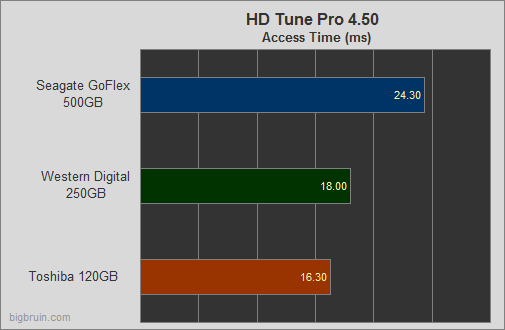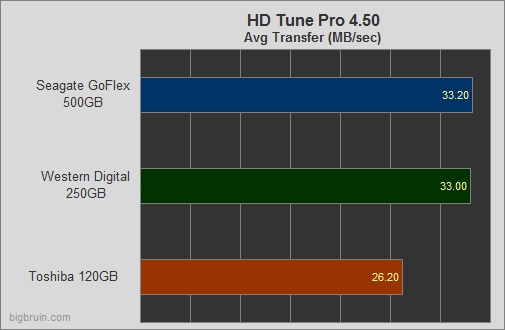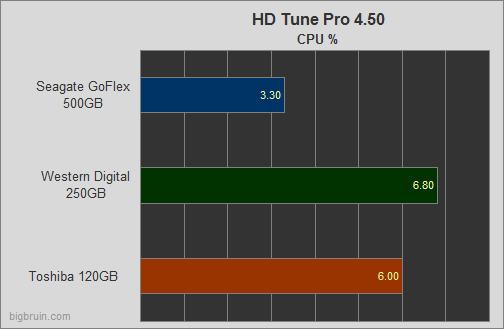Testing:
In order to benchmark the FreeAgent GoFlex drive, we used the following base system:
» Intel Core i7 920 (2.66GHz) processor
» eVGA x58M SLI micro motherboard
» BFG GeForce GTX 260 896MB PCIe video card
» Western Digital 640GB SATA 3Gbps hard drive
» OCZ Technology Platinum PC12600 1600MHz DDR3 triple channel memory
» CoolerMaster Real Power Pro 750 power supply
» Windows 7 Ultimate 64-bit operating system
In order to benchmark the
Seagate FreeAgent GoFlex drive, the following industry standard applications were used:
» HD Tune Pro 4.50
» Everest Ultimate Edition 5.50.2100 (Read Test Only)
» CrystalDiskMark 3.0 x64
» Real World File Transfers
HD Tune Pro 4.50:
The first benchmark we will look at is HD Tune. The first graph below shows us access time, where we see that the GoFlex drive has the slowest access time, while the smallest drive has the fastest time.

The graph below represents our average transfer speeds. As you can see, the Seagate and WD drives are right around 33MB/s, while the Toshiba drive has significantly less bandwidth.

The last portion of the HD Tune suite examines CPU usage. As you can see below, the GoFlex drive only ate up 3.3% of our CPU cycles, while the other drive easily chewed up twice that. The lower overhead will most certainly help with overall system performance especially with CPU intensive applications.
